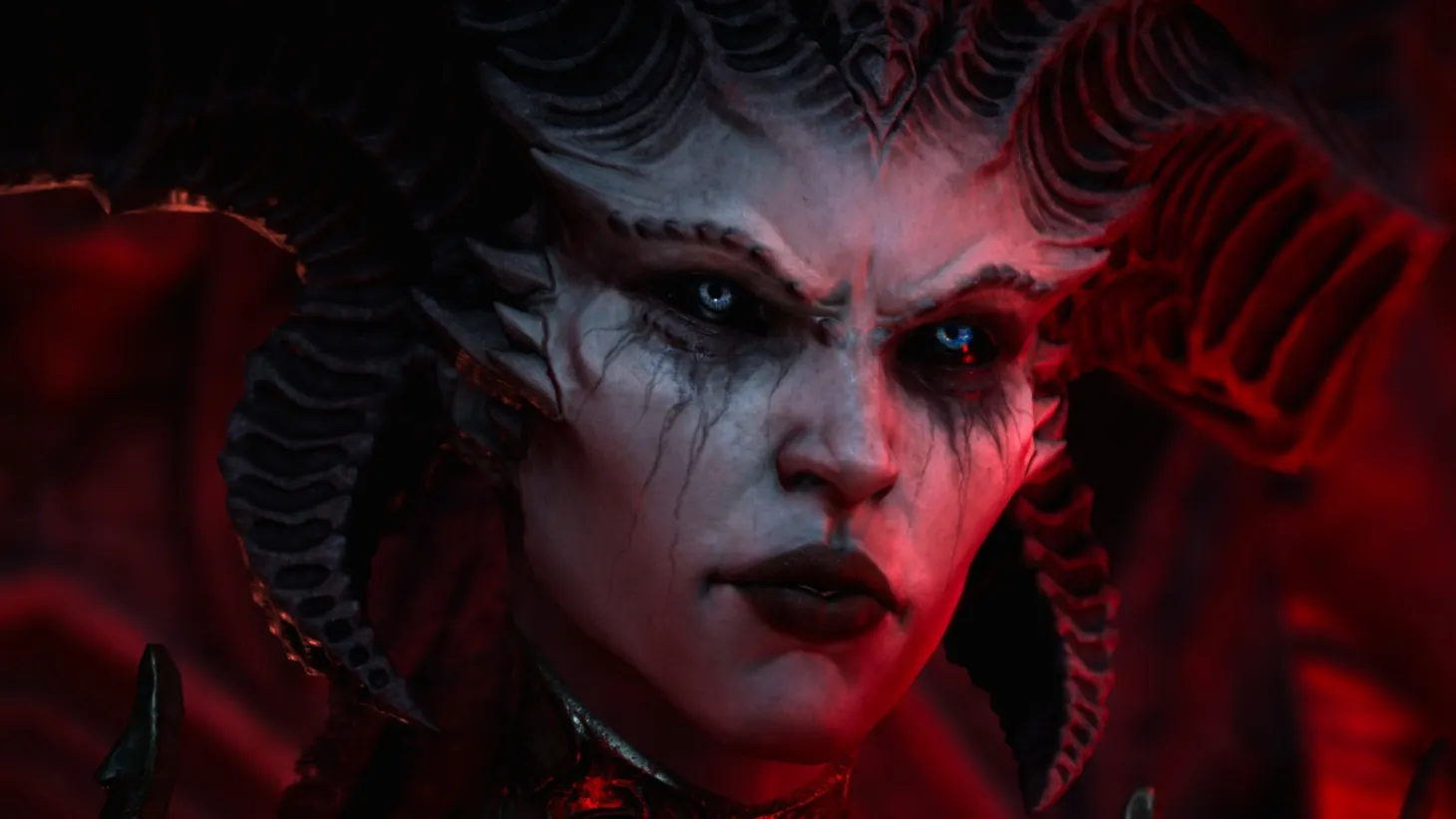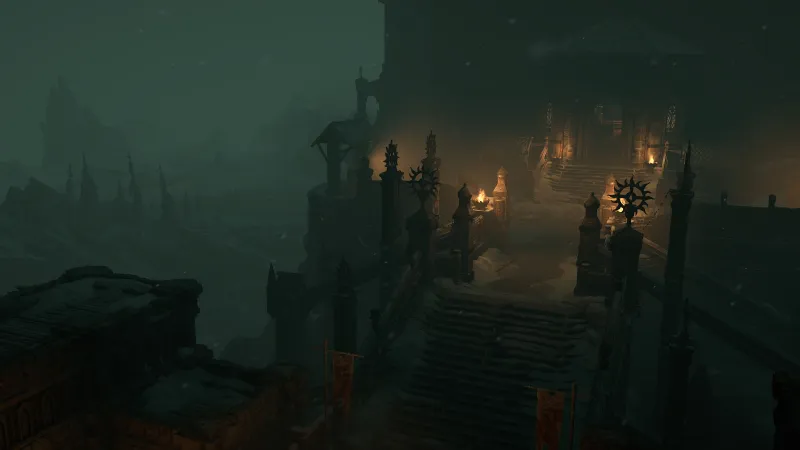


Diablo IV opens its hellish gates to players next week on June 6, but the first review embargo lifts today. I’ve spent dozens of hours roaming Sanctuary over the last two weeks, having completed the campaign, hit level 50, unlocked the Paragon Board, graduated to World Tier III, and devoured as much post-game content as I could in the allotted review period, such as the Whispers of the Dead missions and Helltides.
However, I’m not ready to assign a score until I’ve gotten to play the game under normal conditions: with the servers live and teeming with players hunting Lilith. That means you won’t see a full review until I've spent a good deal of time with the launch version of the adventure. Until then, I’ll give my impressions on the things I can talk about. The short version: Diablo IV is very good.
To preface my experience, I played the Sorcerer class at World Tier II, which is essentially the default difficulty setting for experienced players.

Diablo IV’s thrill comes in the increasingly exciting chase for power, whether it be rare loot or powerful skills, to take down scores of foes as quickly and effectively as possible. The experience succeeds in making this hunt for strength engaging, challenging, and satisfying. Progression is less about making the number of your level go up – enemies scale right alongside you, so you’re rarely more than one level higher than them – and more about smartly utilizing the best gear sporting the most useful effects relative to your class and playstyle. The same philosophy applies to the abilities on your skill tree.
Though combat is enjoyable (if a bit mundane in the early hours due to limited offensive options), the fun picked up in a big way once I acquired enough skill points to fill up my hot bar. At that point, it becomes an entertaining and often chaotic dance of blasting apart foes, artfully dodging attacks with the evade maneuver, and timing cooldowns to unleash hell at the perfect moments. I got a kick out of discovering how skills and perks synergize to create fun combos, such as upgrading my fiery serpent summon with a gravitational pull that turned enemies into a bundle of sitting ducks for a chain lightning assault. I rarely respec skills in RPGs, but Diablo IV’s well-balanced difficulty and variety of dangers challenged me to refund powers (at a reasonable gold cost) to experiment with others. That kept the action fresh and prevented me from resting on my laurels for too long.
Tinkering with gear also became a point of near obsession. Diablo IV offers great flexibility in letting players mold weapons and armor to fit their playstyle. Options such as replacing unwanted gear traits with new ones at the Occultist, destroying worthless loot for crafting materials to upgrade equipped items multiple times, slotting in stat-boosting gems, or imbuing gear with affixes to add powerful effects had me gleefully upgrading my loadout like a fantasy-version of Tony Stark. And even when you’ve crafted a winning set, decent loot drops meant I still found superior items often enough, with Legendaries appearing more frequently as the game progressed. For those who hate the idea of constantly visiting the menu to swap out new gear, I usually got a lot of mileage out of simply upgrading my existing gear until I found something that was too good to pass up.

Sanctuary is gigantic, though exploring this biodiverse continent can be a slog, primarily due to how long it takes to get a mount. You’ll spend at least half the game traveling between the relatively limited fast-travel points on foot, and I sometimes grew tired of being constantly assaulted by occasionally suffocating mobs of enemies when I just wanted to reach my destination and soak in the beautifully detailed scenery and great soundtrack. I’m glad there are plenty of things to kill, but there’s rarely a stretch where you’re left alone.
Despite these dangers, uncovering every inch of Sanctuary is largely worthwhile. Raising my Renown became an effective hook, which rewards skill points, money, and even additional potions for discovering new areas and waypoints, and completing quests and dungeons, among other routine ventures. Regularly occurring live events present a variety of combat tests that reward two tiers of treasures depending on how well you perform. I enjoyed most of these and often went out of my way to complete any I stumbled upon. I also liked hunting the dozens of well-hidden Altars of Lilith that grant precious permanent stat buffs. Over 100 sidequests range from simple fetch quests to multi-part story arcs, the latter of which often go in some intriguing directions that make them, for the most part, good side dishes to the main course of the campaign.
My favorite and most intimidating diversions are Strongholds. These tough-as-nails zones present a unique series of combat scenarios tied around a specific story, and conquering them sometimes unlocks a new settlement complete with new side quests and, sometimes, another fast travel point. One tasked me with destroying demonic effigies across a village while its residents swarmed me, and another had me expel the ghost of a man burned at the stake by collecting human ashes to extinguish demonic fires. It took repeated attempts to beat my first Stronghold, but conquering them always feels like a triumph in skill and strategy. The separate rewards these activities bring and how they feed into the broader progression of your Renown and your character create a strong, compelling loop that makes every activity feel rewarding in some way.

The enjoyable action and progression are wrapped around an equally compelling narrative. Lilith’s return unfolds in a lengthy campaign told through beautiful cinematics and the most in-game cutscenes in series history, presenting an engrossing dark tale about escaping the futility of being trapped at the mercy of greater powers vying for control at humanity’s expense. While chock full of references to past games, the story is easy to follow for newcomers since it doesn’t rely on an encyclopedic knowledge of the series to grasp. Having jumped on board the series with Diablo III, I’m no lore expert, but the game treats its history with such an infectious reverence that I kept a wiki open to learn more about a returning face or referenced event due to how engaged I was with the plot. I found a few isolated moments to be outright dumb, but there were many points where I only wanted to mainline the plot because of how excited I was to see what would happen next.
Completing the campaign only made me hungrier to take my beefed-up character into the substantial post-game, which, from what I played, succeeds in offering fun, rewarding tests of my power. Whispers of the Dead present new, limited-time incentives to existing tasks, such as slaying certain monsters or running dungeons in exchange for currency to buy special loot caches. You have to do quite a lot to earn this reward, but they often fold neatly into things I was already doing, so it’s a nice added bonus. I had a great (and sweat-inducing) time completing the capstone dungeon to unlock World Tier III, which introduces Helltides, Nightmare Dungeons, and an overall tougher challenge. Helltides offer an adequately entertaining mixup by introducing stronger enemies in designated zones that drop separate currency to earn exclusive rewards.
I explored the PvP-focused Field of Hatred, but I couldn’t take full advantage of it due to the small number of fellow media members playing the game (I only encountered one human player throughout my entire pre-launch adventure). However, I found value in exploring even without rivals to slay since you can still kill enemies to collect Red Dust to spend on exclusive store items, such as the Odds and Ends store's risk/reward-style magic scrolls.

As a live-service game, the always-online requirement most often became a mild nuisance when I wanted to take short breaks. I often left it running to avoid the process of reloading into the server (which isn't terribly long given the lack of players but still enough of a process where I avoided it when possible), which required finding a safe space to avoid getting jumped by enemies. Outside of that, I was kicked from the game a couple of times due to ongoing technical tests, which provided a glimpse into what will be the real-life tragedies of players losing progress midway through a tough dungeon or missing out on rare loot due to the randomized delivery.
The most heartbreaking setback I suffered happened when I was unceremoniously kicked from the game right before toppling a difficult boss, forcing me to replay the entire battle. For those who plan to treat Diablo IV as a single-player experience, such instances will likely sting, and I can only hope Blizzard has used this review period to reinforce the servers enough to minimize these setbacks at launch.
The in-game store was disabled during the review period, as was crossplay, but I did get to play a bit of co-op, which was a blast. I also ran into a fair number of glitches during my time (some loading gating access to some areas, NPCs riding invisible horses) that Blizzard promises to have ironed out by the time Diablo IV launches, so I’m looking forward to seeing how much that patch cleans up. Though I still have some questions, I had a great time with Diablo IV. It delivers on its promised return to the darker tone and aesthetic of the earlier games while presenting engrossing, meaningful progression with fun combat, a strong narrative, and numerous activities that made me want to extend my visit to Sanctuary. While it remains to be seen how the experience handles the incoming flood of players once the lights are turned on, I think Diablo fans, old and new, are in for a treat.